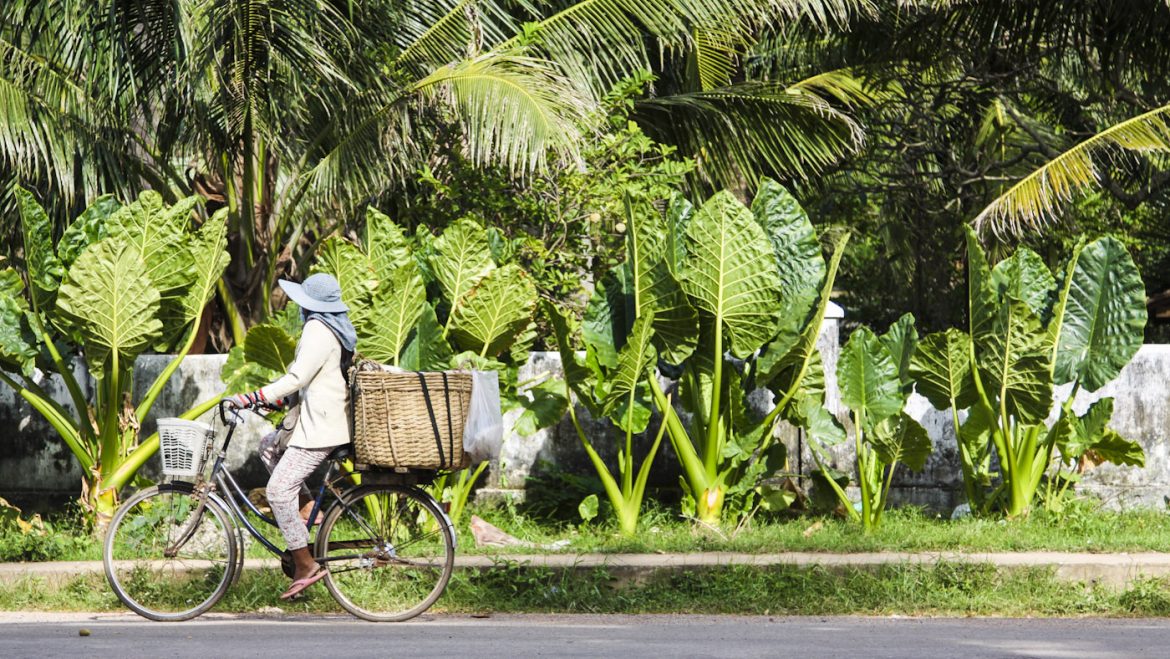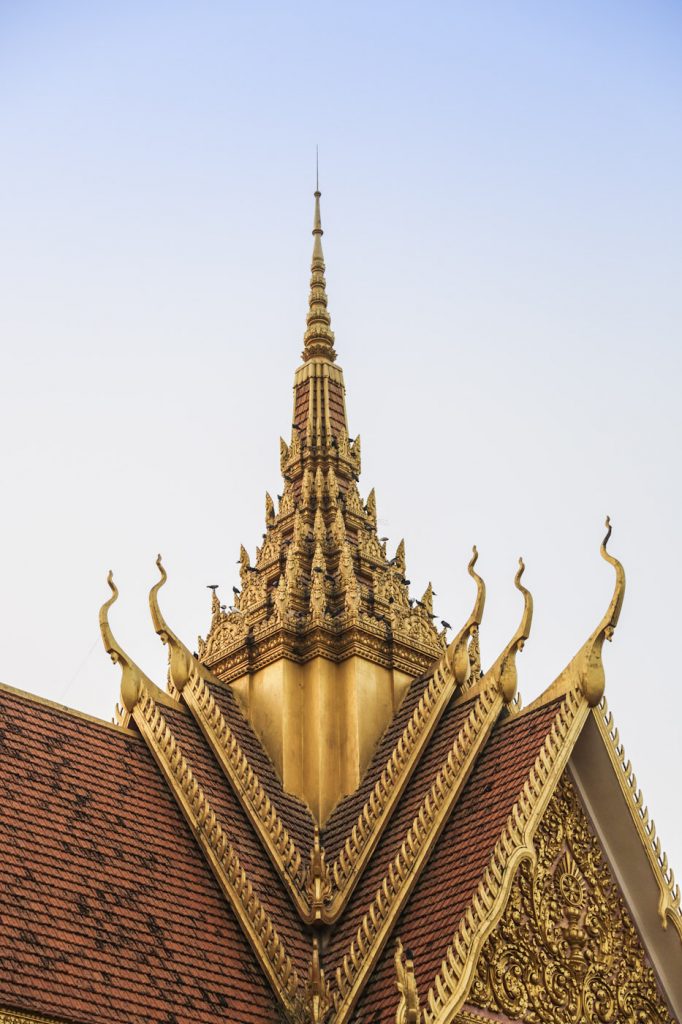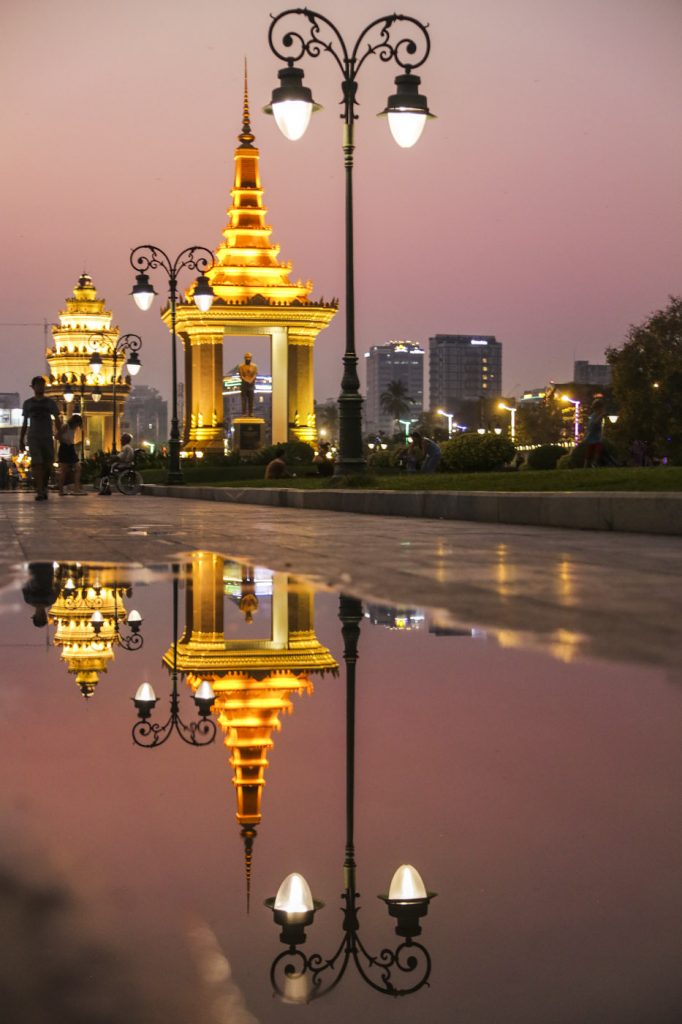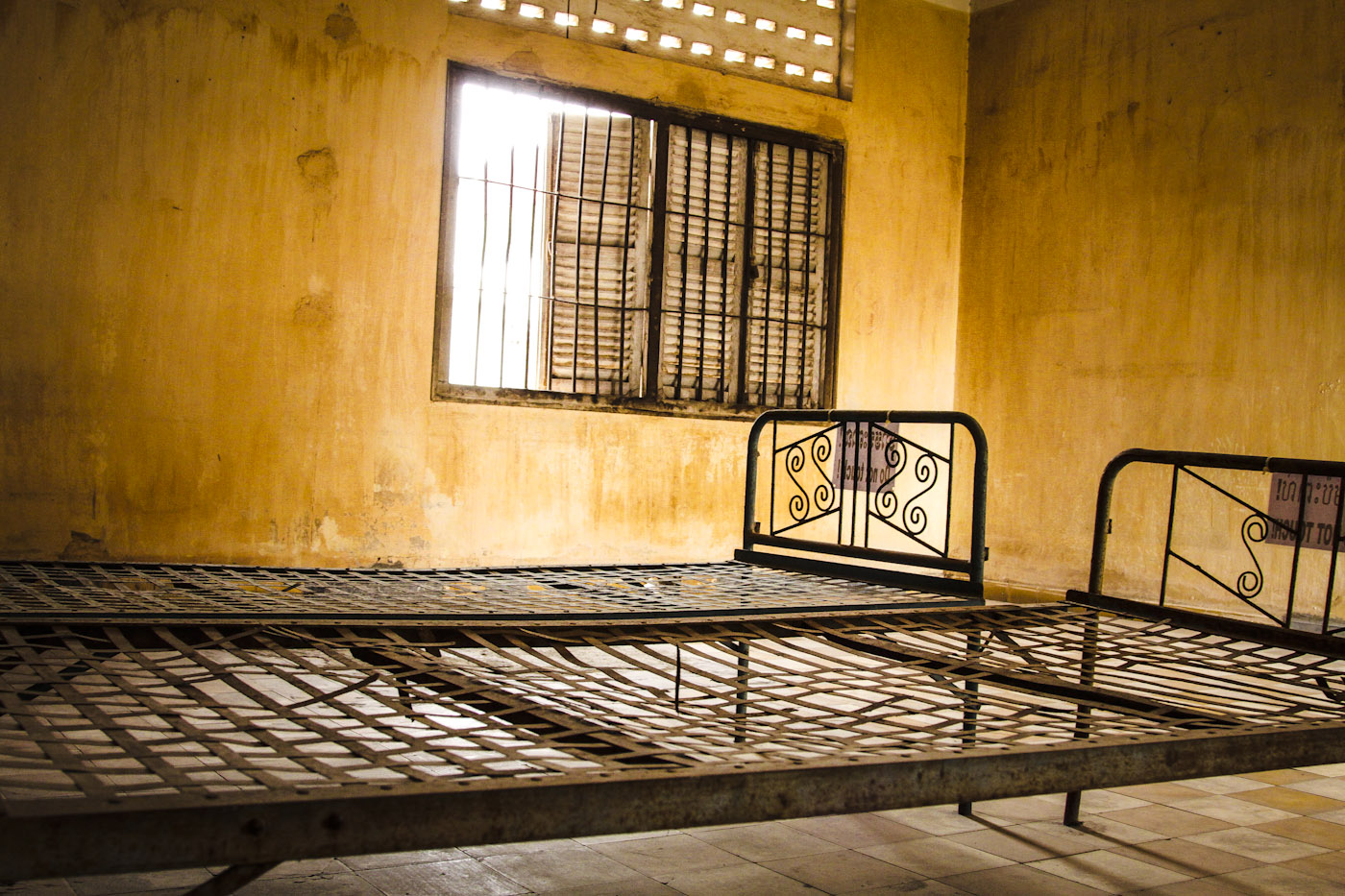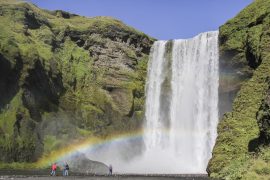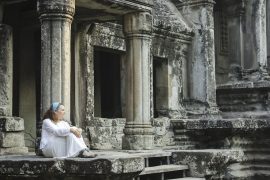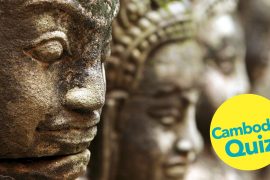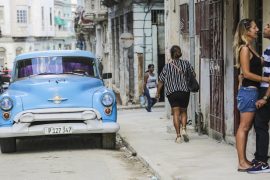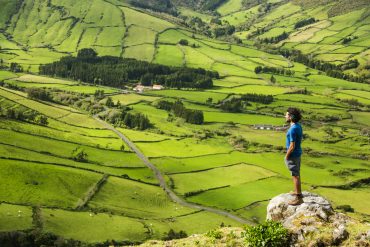Cambodia is a small country with so much to discover! The first time we visited Cambodia, we organised our 10-day trip around Siem Reap and Angkor Wat. This time, we had more time, and wanted to visit other parts of the country as well, but decided to reserve a few days for the temples around Siem Reap, because our first visit had been so touching and special. Almost 15 years after our first visit, we were not disappointed, on the contrary, we were as touched and as amazed by Angkor Wat as we were the first time. But were glad, that had enough time to discover other parts of the country…
1. Discover its Vibrant Capital Phnom Penh
Once called ‘the Pearl of Asia’ Phnom Penh is Cambodia’s capital and also the largest city of Cambodia. The city’s landmarks such as the Royal Palace and the Silver Pagoda were built in the classical Khmer style, but the French also left a mark spread through the city in the shape of colonial villas and French churches. Do not miss the Phsar Thom Thmei market built in the Art Deco style.
2. Try Cambodia’s Tasty Food
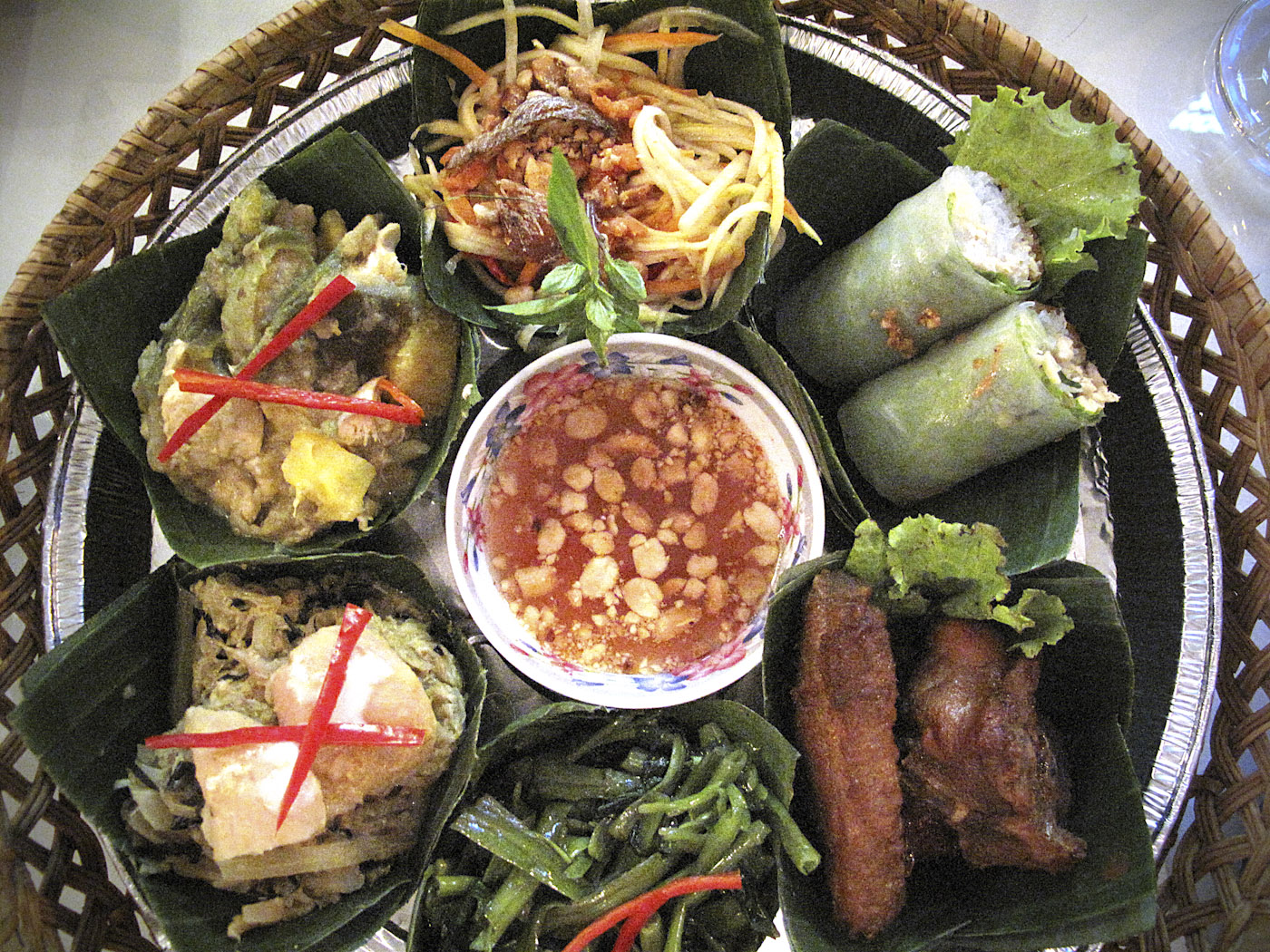
For a complete food experience try a giant plate with different sorts of dishes. It is usual that restaurants prepare this kind of assortment in order to allow many dishes to be tried during the meal. In this case, we had fresh spring rolls, fish amok, morning glory, green mango salad and friend pork. Delicious!
>> Did you know that Cooking Classes are very popular in Cambodia?
3. Relax On Koh Rong Island, Cambodia’s Beach Paradise
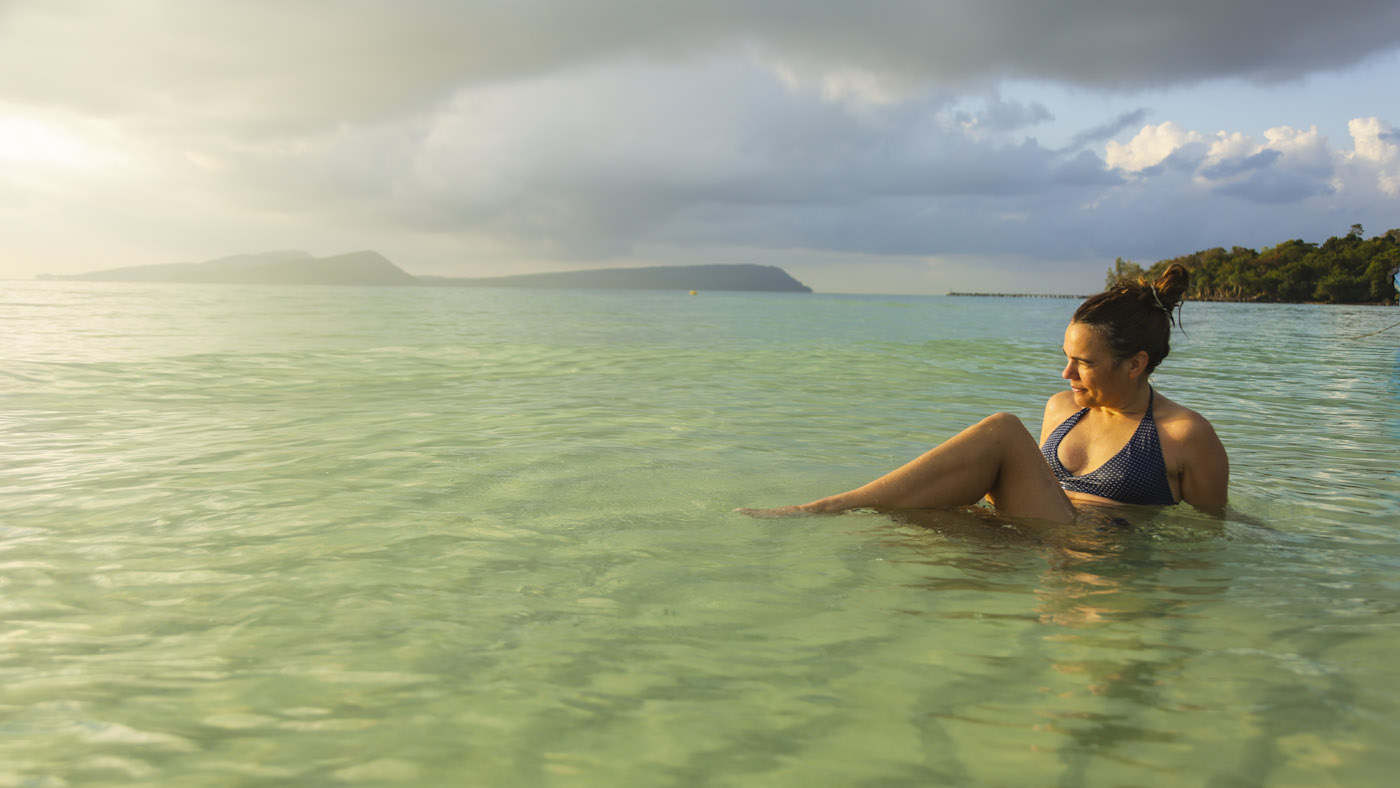
Koh Rong Island is a Cambodian island located in the Gulf of Thailand, home to some of the most beautiful beaches of South East Asia. If you need any other reason to visit Koh Rong. However, here comes an important one: even though popular, the island is not (yet) transformed by the huge resort complexes that are growing in Sihanoukville, for example. The main accommodation in the island is found in the camping sites, where one can pitch one’s tent or rent a cute wooden bungalow, right on the beach.
>> Find out more about Koh Rong Island
4. Spend Some Days in Siem Reap to Visit the Angkor Wat Temples
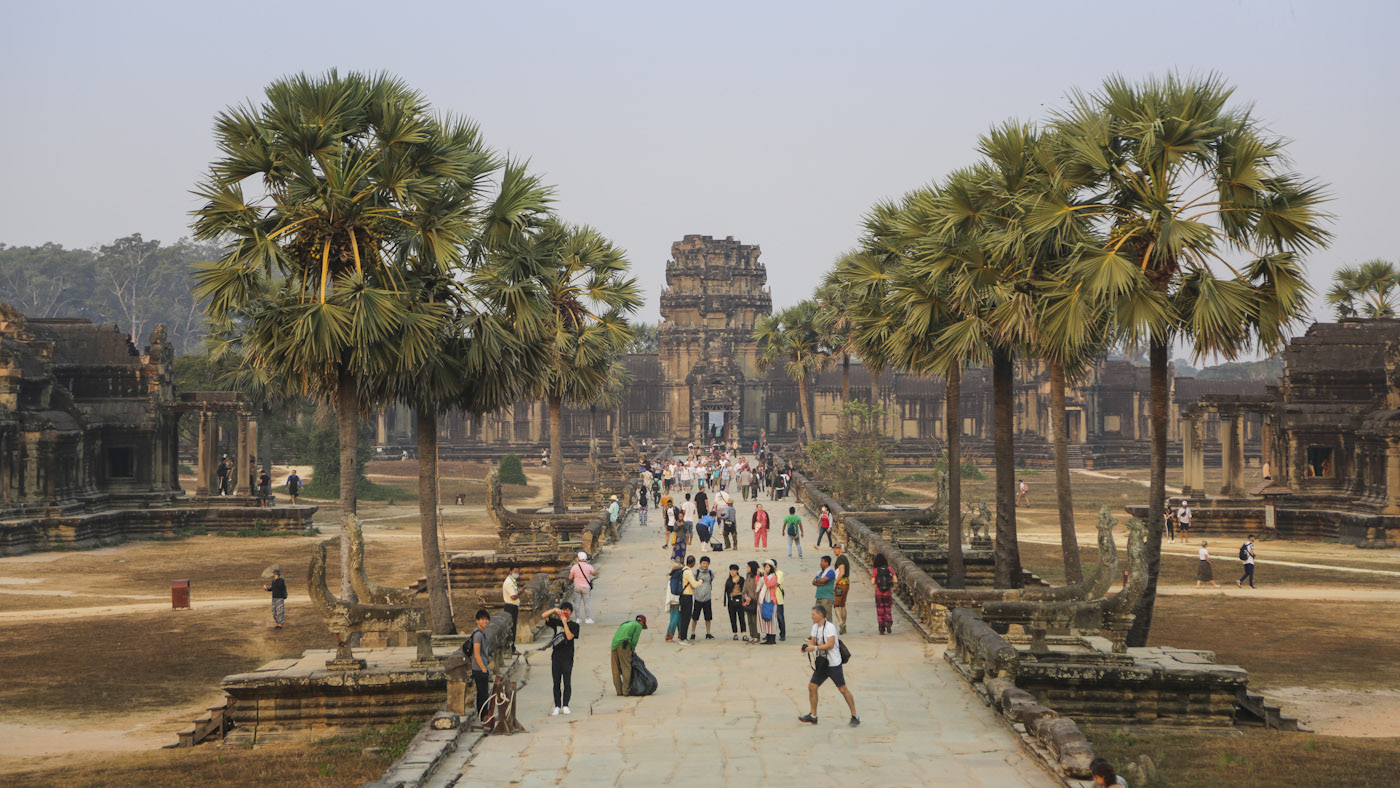
The capital city of the Khmer empire from the 9th to the 15th centuries used to be Angkor. Today, it is a UNESCO protected site, that comprises more than one thousand temples, the most imposing one being the magnificent Angkor Wat, which is also the world’s largest religious monument. The site is an example of Khmer’s prime engineering and fine architecture. Ideally, one should spend at least three days in the complex, so if you can afford the three day ticket, don’t hesitate in buying it!
>> Find out how to organise your visit of the Angkor Wat temples
5. Learn How To Eat Crab in Kep
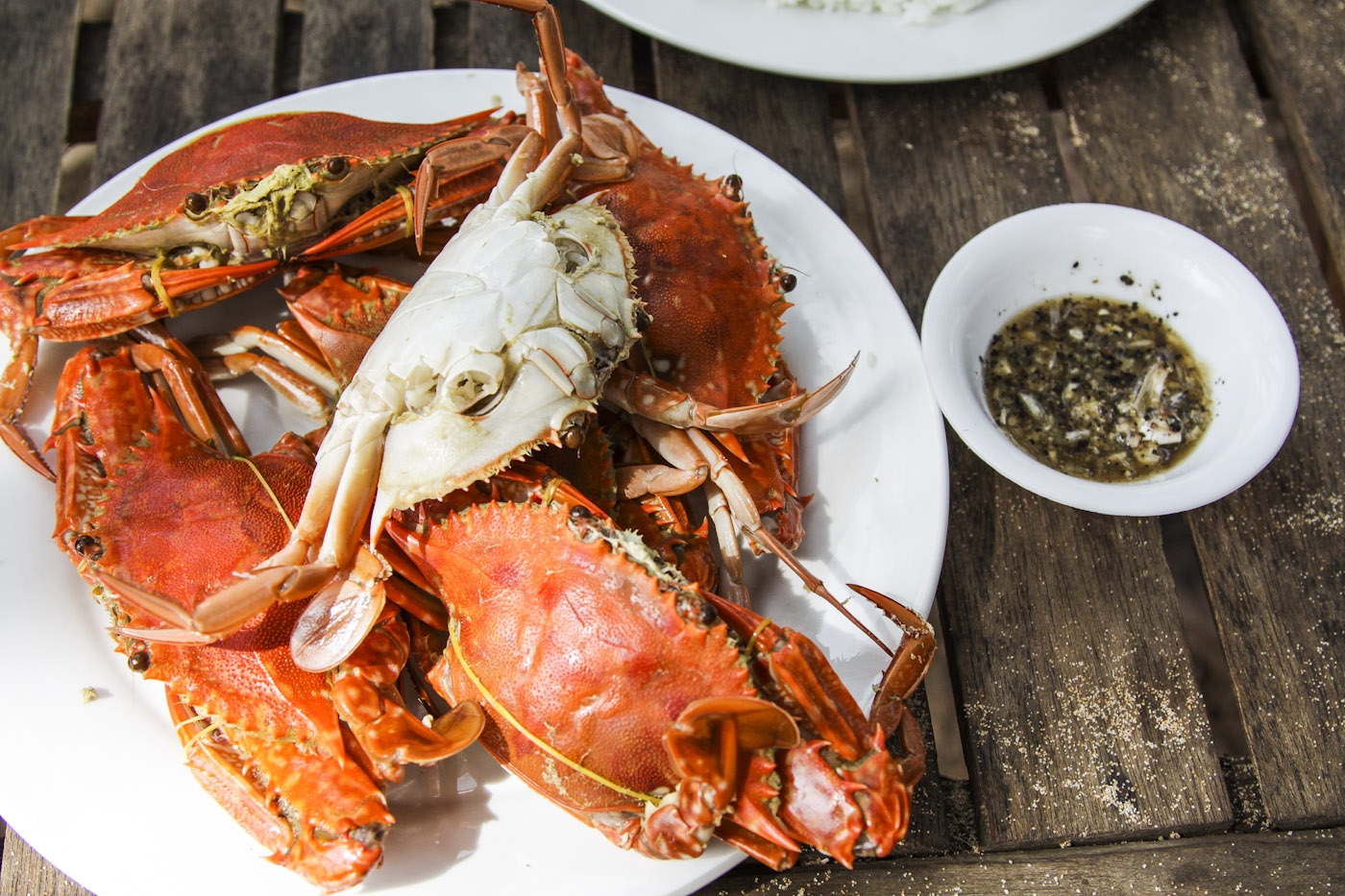
The giant statue of a crab on Kep’s main beach is peremptory: Kep is the capital of the delicious blue crustacean that inhabits these lukewarm waters. Many restaurants offer crab on the menu (try them fried in the pan or in a pepper sauce that is made with Kampot’s pepper), but you can go to the market or to the beach and buy them there. Don’t worry about how to cook them. Many stalls on the beach or in the market will readily prepare them for you for just one or two dollars.
6. Observe Wildlife From a Distance
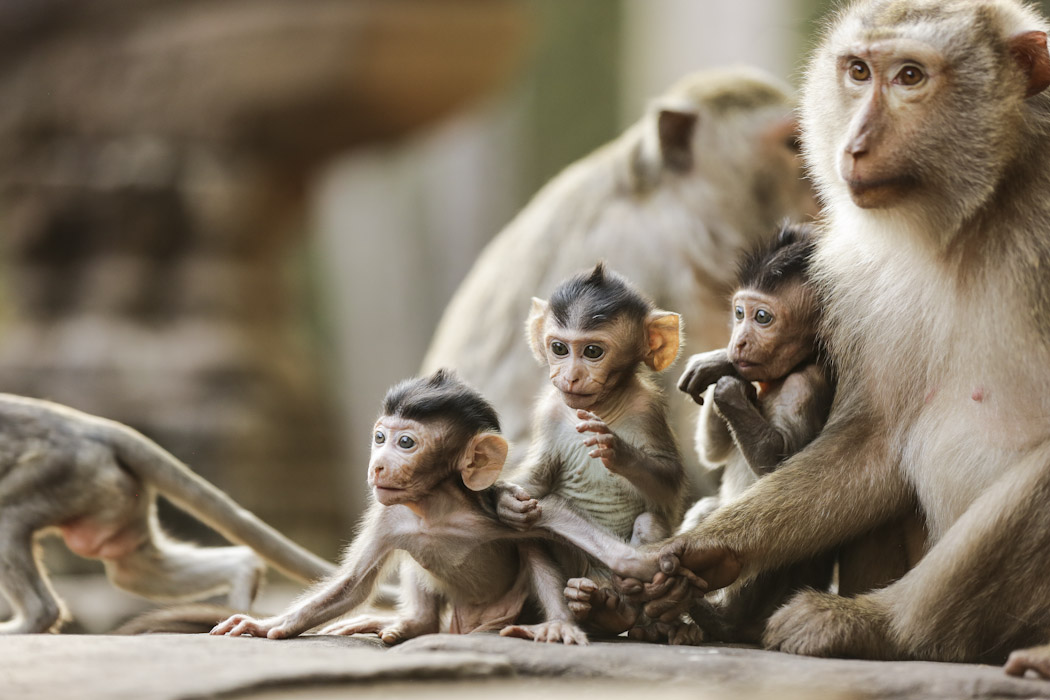
A visit to the Angkor Wat is so special, that one can easily spend days in the complex. The Khmer style of its grandiose architecture, the holy ambience still felt in the most quiet temples, the powerful jungle reclaiming what is theirs, they all add to make this a special moment. But then come the monkeys, and they are so cute that you can forget the temples and spend hours observing wild life happening in front of your eyes…
7. Don’t Miss Sunrise at the Mekong
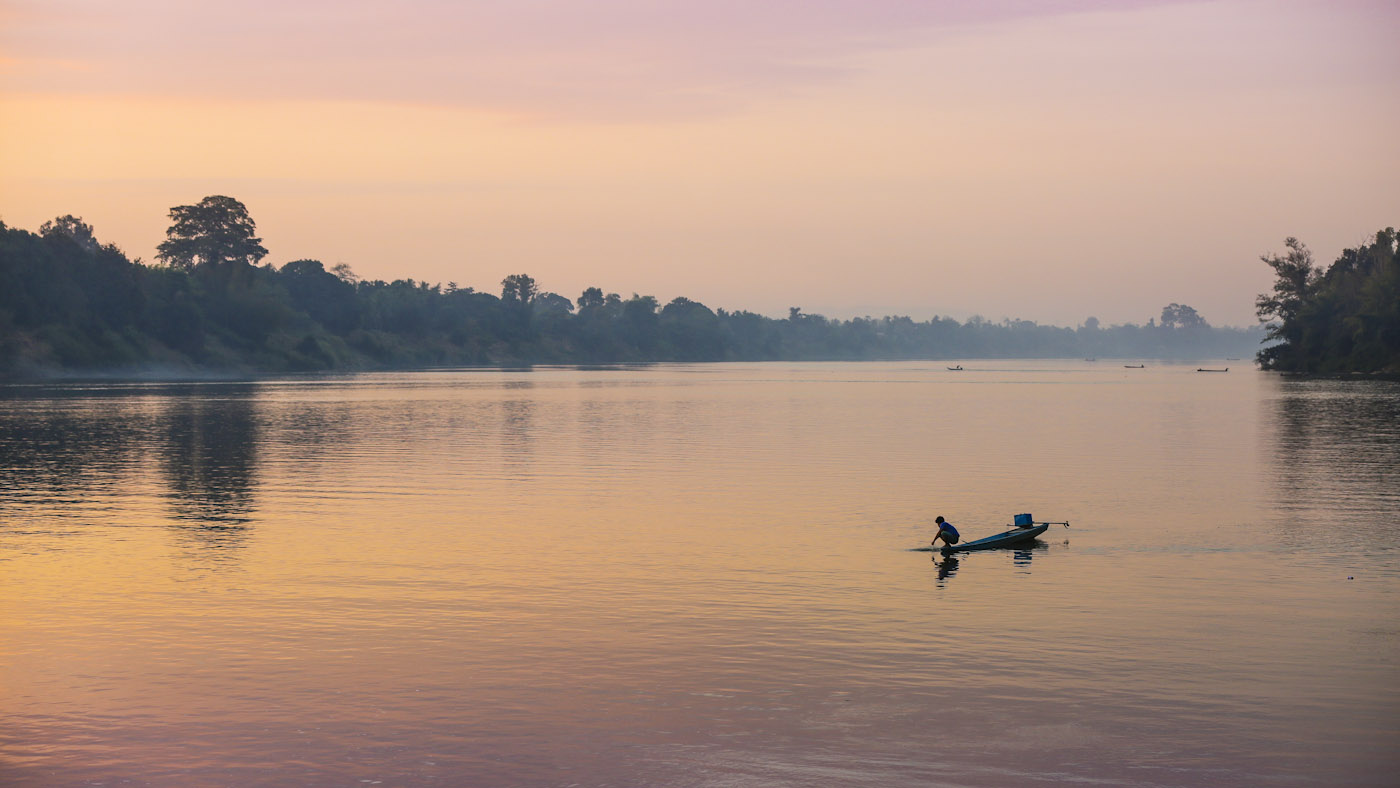
The Mekong River is known by the locals as ‘Mae Nam Khong’, which translates as ‘Mother of all rivers’. This name is justified by its length – the Mekong is the longest river in Southeast Asia, running 4,180 kilometres from source to mouth – but also by its importance as source of different resources. It offers not only electricity, crop irrigation and fishing but also is an important means of transportation. Besides the Mekong, Laos has a vast network of rivers, totalling almost forty.
8. Experience the End Of the Day By the Mekong River
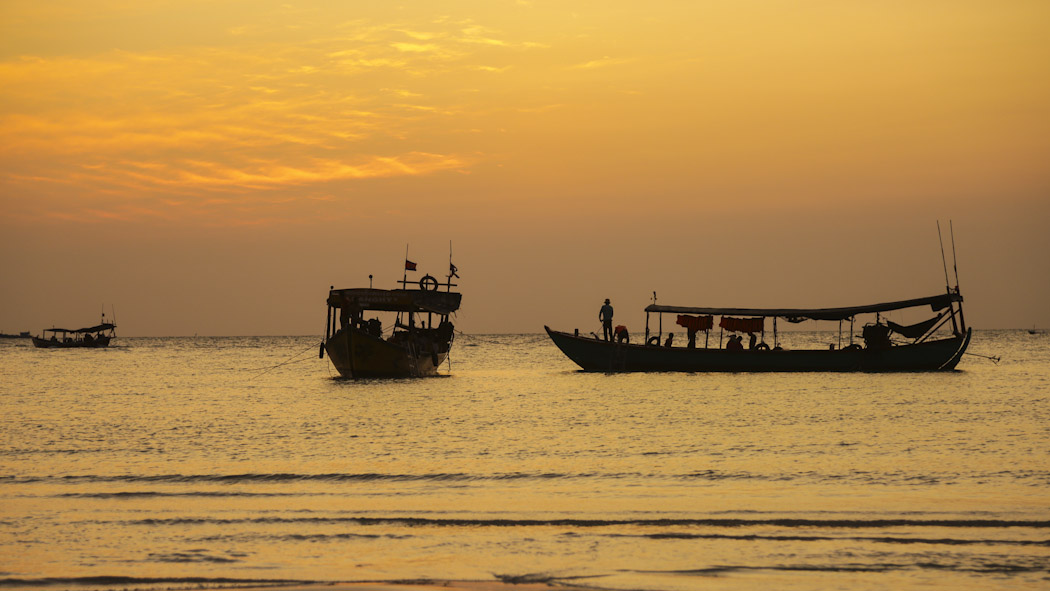
If sunrise at the Mekong brings us memories of all the work that happens by the Mekong, sunset is about relaxing. And although many fishermen take their boats at dawn, the atmosphere is not frenetic as in the morning, it is as if fishermen knew that sunset is the moment to slow-down and loosen up, and even at work, it is time to celebrate the end of the day, put the spirit and the body at peace and enjoy the river’s colours change into a golden sheet.
9. Explore the Several Hindu and Buddhist Temples
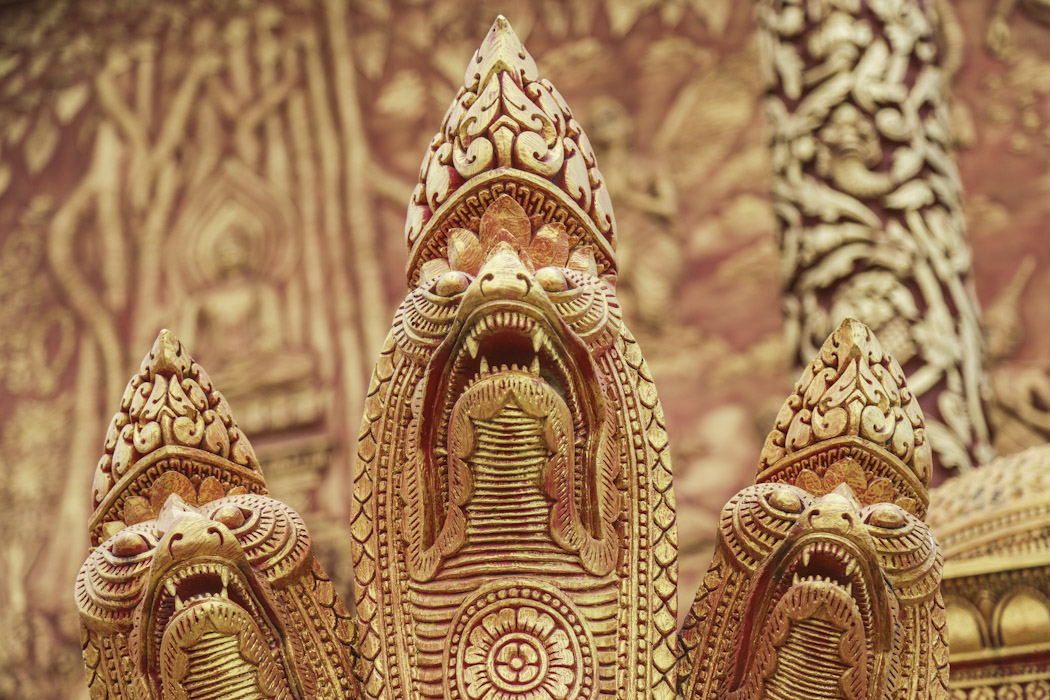
You will find that many Buddhist temples in Laos have Hindu characteristics be it in the architecture or in its colourful deco and motifs. The reason for this is actually a pragmatic one. Throughout the centuries, the temples (if not the population) have depended on the governors. A Buddhist temple would see itself change into an Hindu temple if the region’s new governor happened to be a Shiva believer. The other way around would happen as well. So temples would not be destroyed whenever religion changed, but it would simply be adapted, with new paintings and new statues. With the years, some important features of one or the other religion remained in the temples, making some of them a mishmash of styles.
10. Set Camp In the Countryside
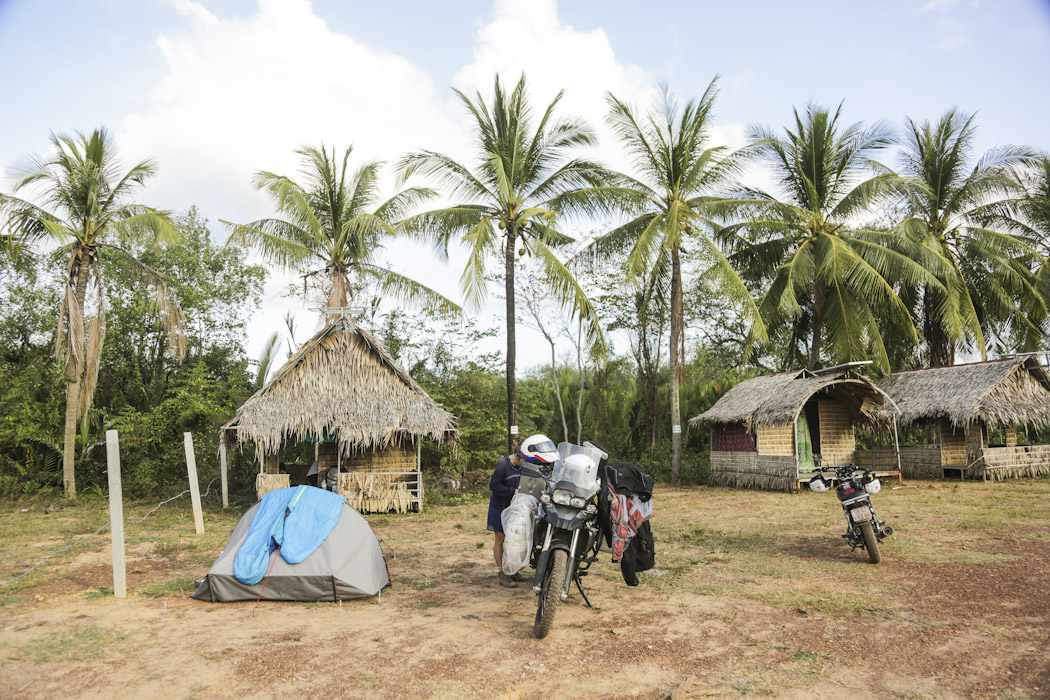
There are fewer camping in Southeast Asia where it is much more difficult to find the immense landscapes of grassland that we had found in Central Asia. Grassland has given way to people and villages, and that alone has a great impact on camping opportunities. We hardly found any camping sites and even though wild camping is not forbidden or discouraged, there were few places that were really inviting. Given the low price of lodgings, we often opted for local accommodation or hostels where a fresh shower was always a pleasure. Occasionally though, we did fall for a beautiful place, and often were pleased that the kids would join us, curious about all the gear.
11. Taste the Juicy Fruits of Southeast Asia
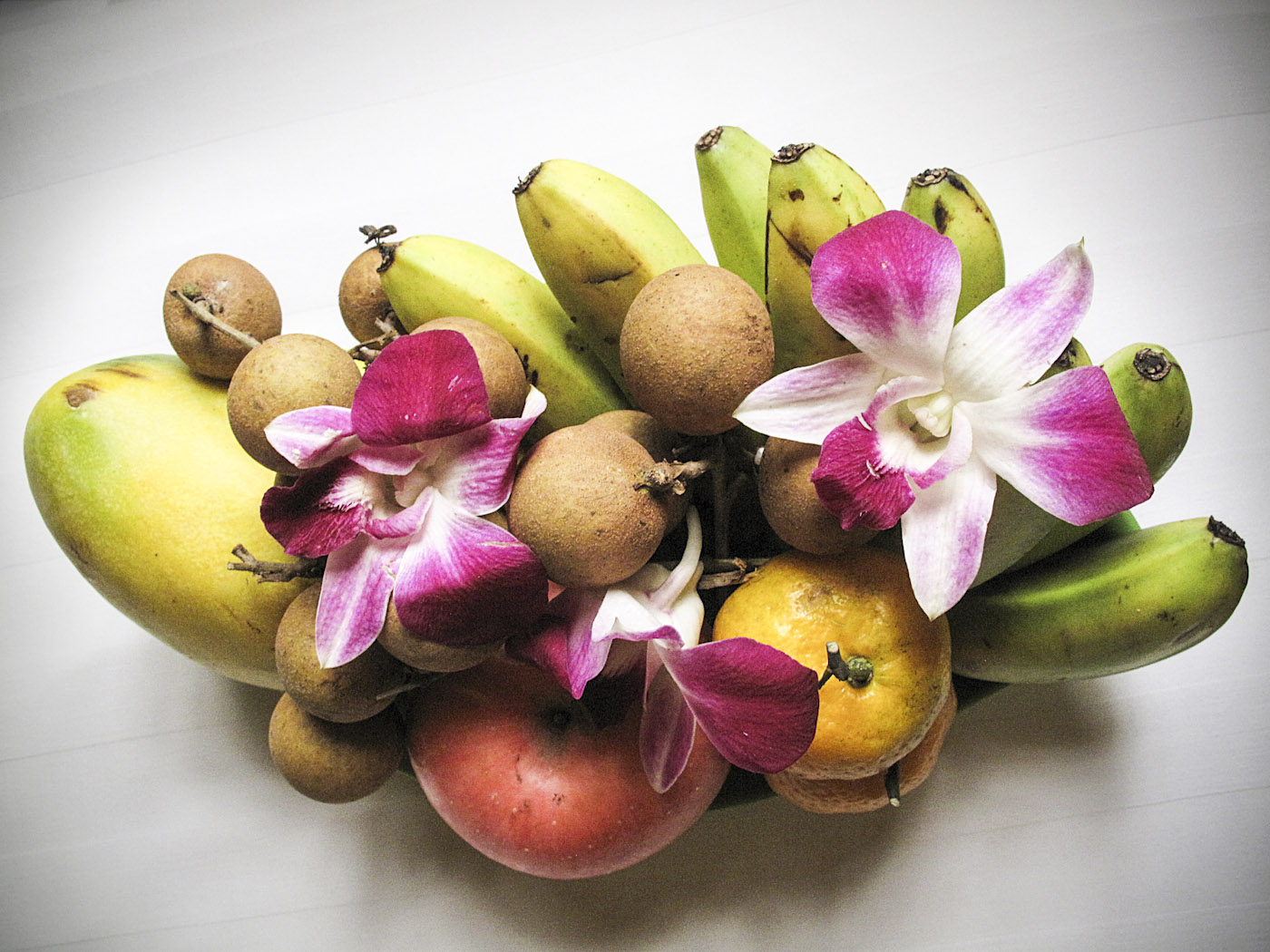
If it’s true that Southeast Asia is known for its unparalleled cuisine, it is also true that part of its success has to do with the quality of its fresh ingredients. Besides the vegetables and herbs, markets are packed with fresh fruits that are ripened by an almost omnipresent sun. They couldn’t be juicier, sweeter or tastier, and everyone loves them as a snack throughout the day.
>> Check our extensive list of the best fruits in Southeast Asia
12. Find out about Buddhism in Cambodia
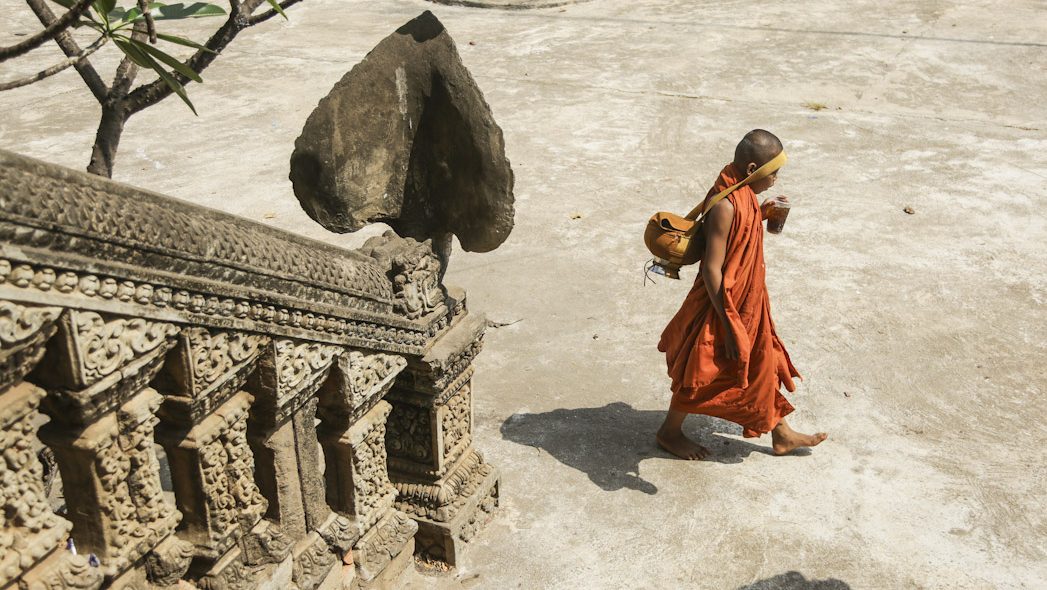
The dominant form of Buddhism that is practised in Cambodia belongs to the Theravada Buddhism, a branch that developed in Myanmar, Cambodia, Laos, Sri Lanka and Thailand. One of the characteristic features of this Buddhist school is that only monks can achieve the Nirvana. This was new for us. We first became familiar with Buddhism when we visited Korea, Japan and Mongolia, where they practise the Mahayana Buddhism. In this branch they teach that enlightenment can be attained in a single lifetime and can be accomplished even by a layperson, not only by monks. Another characteristic of Theravada Buddhism is the use of Pali as a sacred language and the Pali Buddhist canon as the highest scriptural authority (written around the first century BCE).
13. Visit the Amazing Floating Village of Kampong Luong (with video)
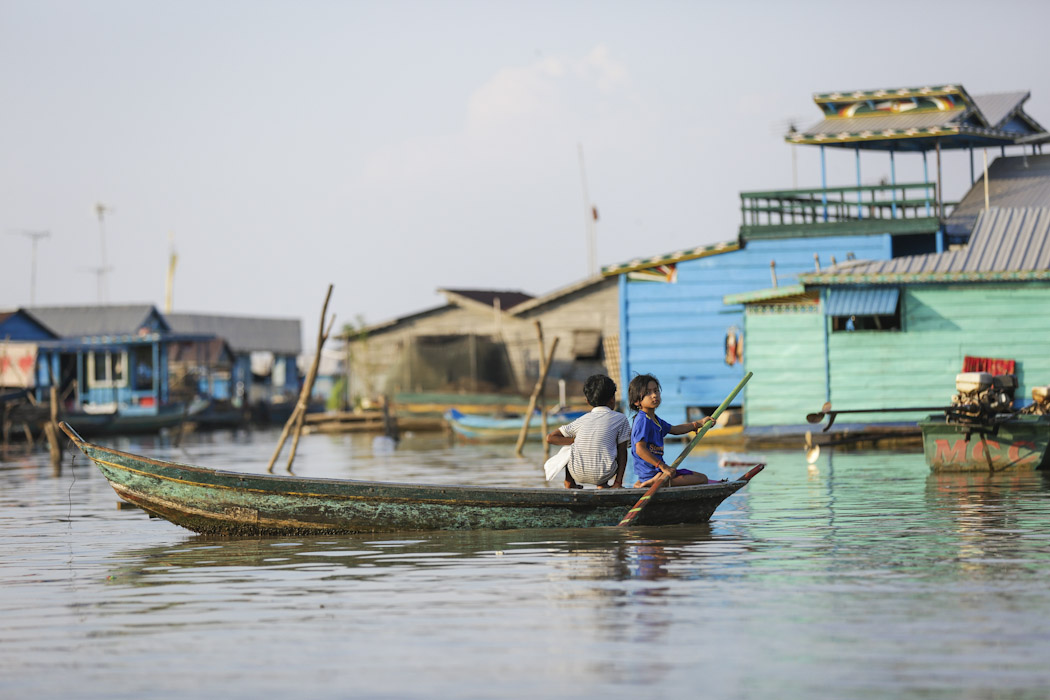
At first approach, Kampong Luong may look like just another ordinary Cambodian village. There you find grocery shops, a local school, one petrol station, and even one pagoda hands in hands with a church. Further down the village there is the hospital and one ice-factory. This all looks quite normal, but Kampong Luong is far from being a ‘normal’ village, at least for our European patterns. The entire village life happens on the Tonlé Sap lake, on floating houses and boats. A ‘stroll’ through the village is only possible with a boat. Kampong Luong is a floating village on the Tonlé Sap lake.
>> Find out more about the challenging life on the floating village of Kampong Luong
14. Meet the Rats that Save Lives
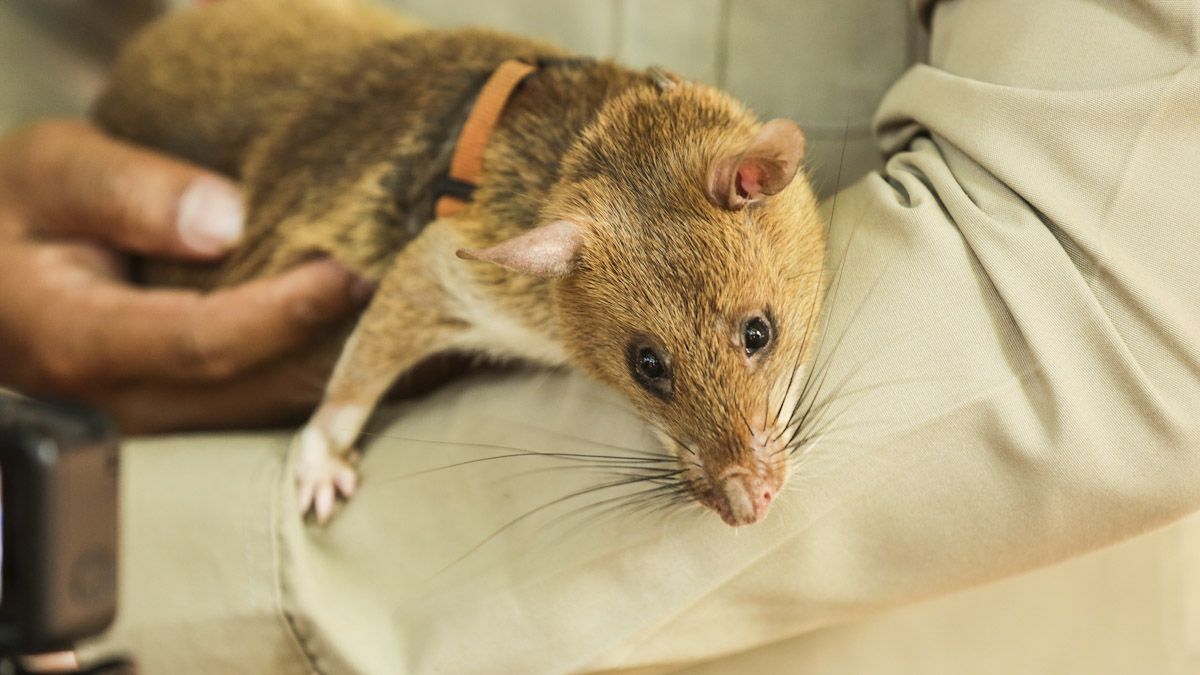
APOPO is a place where tourists from all over the world can find out how the centre uses rats and their exceptional sense of smell to hunt down mines and other explosives that still haunt the Cambodian ground after three decades of war. We were in Siem Reap to visit the Angkor temples and jumped onto the opportunity to pass by and learn more about the rats that clean the Cambodian countryside and save lives. APOPO opened its first visitor centre in Siem Reap, Cambodia, in 2018.
>> Discover the rats that are saving lives in Cambodia
15. Taste Street Food in the Markets
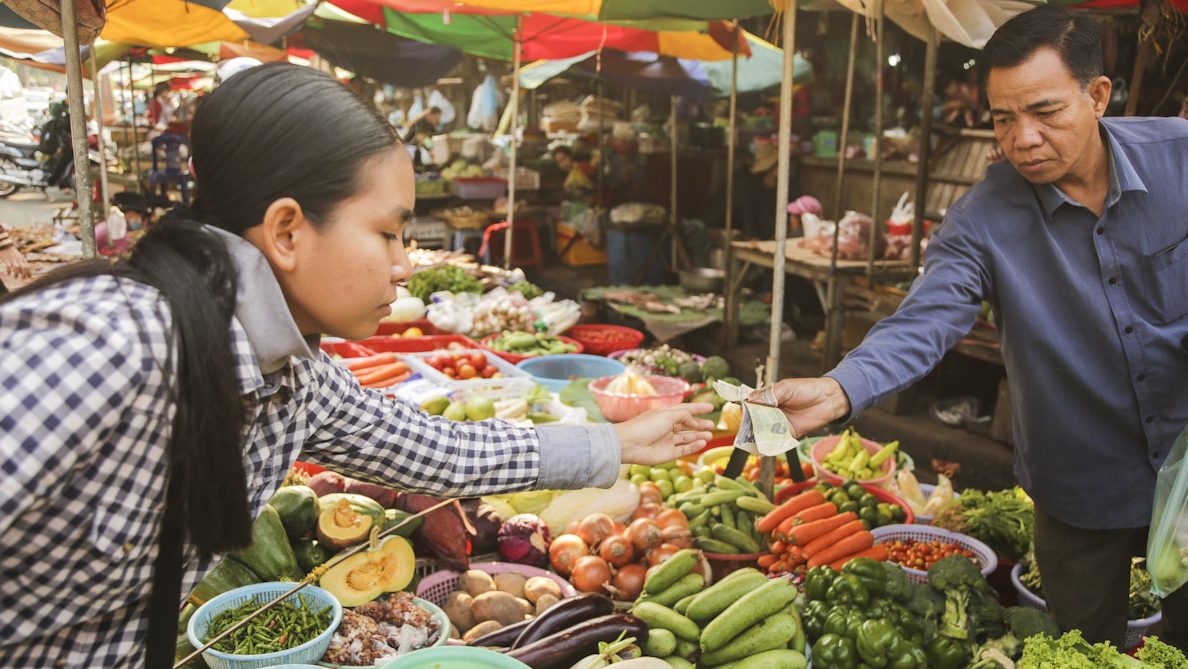
Markets are often the best places to have a snack or a meal. You will see that they are packed with locals who come here to by their ingredients. In Southeast Asia, though, you will see that an entire section of the market is reserved for cooked food. This is usually a very simple stall with some small chairs and a couple of tables, but the food is usually the best taste ever, as each cooker concentrates on his own special dish. Delicious!
16. Don’t Miss the Quiet Town of Battambang
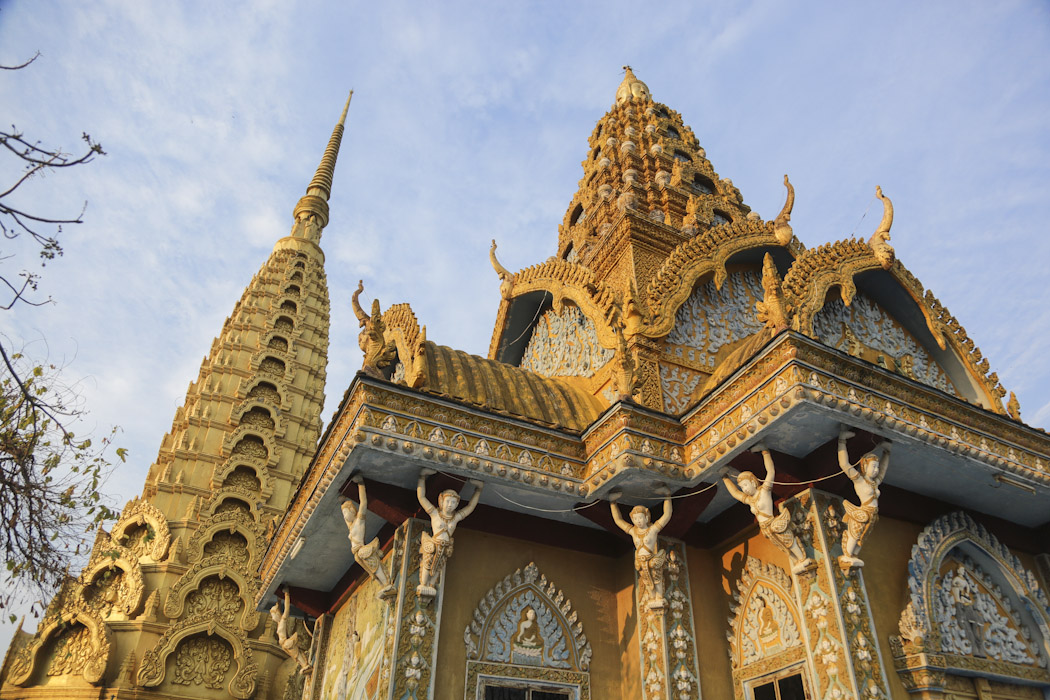
Battambang is a quiet town without any superlative titles. It has got the privilege of being a lovely and almost forgotten town, with all the positive things that being ‘forgotten’ offers. We spent a few days there and realised that we quickly adapted to the rhythm of the town and did not feel to move along. It could have been its architecture (Battambang has retained a lot of the French colonial era), it could have been the lively markets, the delicious food or everything else that one can visit only a few kilometres away from the village. Battambang has got enough points of interest to keep one around for a couple of days.
>> Find out what is there to visit and do in Battambang
17. Have a Cooking Class
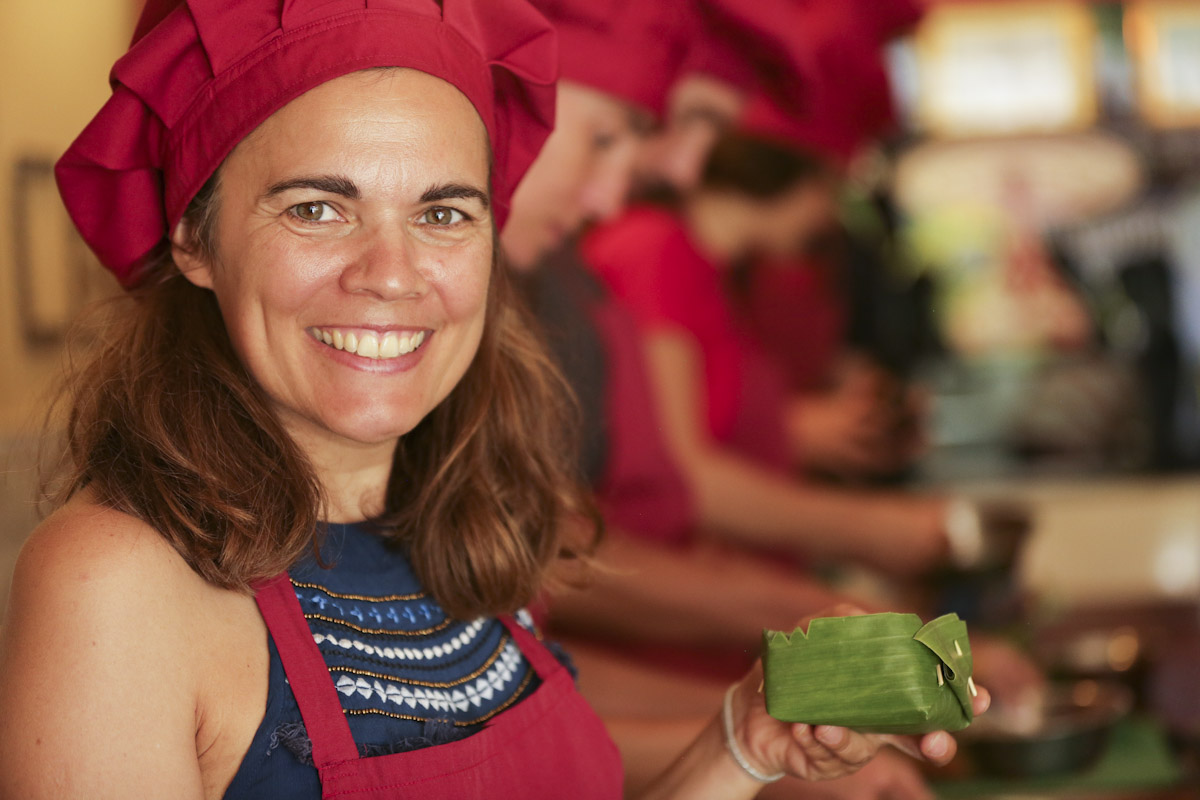
Jorge and I usually work as a team in various different fields: while he drives, I enjoy the views; while I cook, Jorge eats! This works mostly well, but sometimes I do not feel like cooking, and when that happens Jorge offers to do the cooking. You can say ‘oh that is sweet’, hell, no! If you say that, you know nothing of Jorge’s abilities to cook… In order to reverse this usually disastrous result, we enrolled in a cooking course when we were in Battambang, Cambodia.
>> Did you know that Cooking Classes are very popular in Cambodia?
18. Drive Along the Lush Green Rice Fields
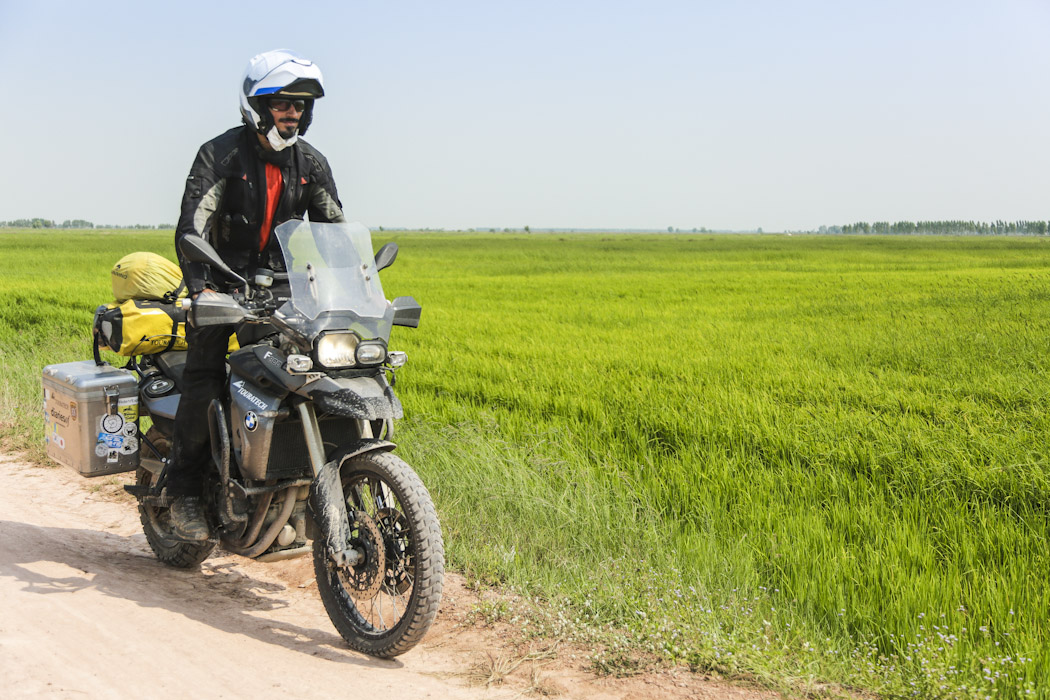
Depending on the season you visit Cambodia, you may get to see the country painted in a lush green colour. This happens mainly during the rain season, and immediately after, when the fields are blossoming with rice plants. It is beautiful and definitely a highlight of Southeast Asia.
19. Take a Cambodian Ferry
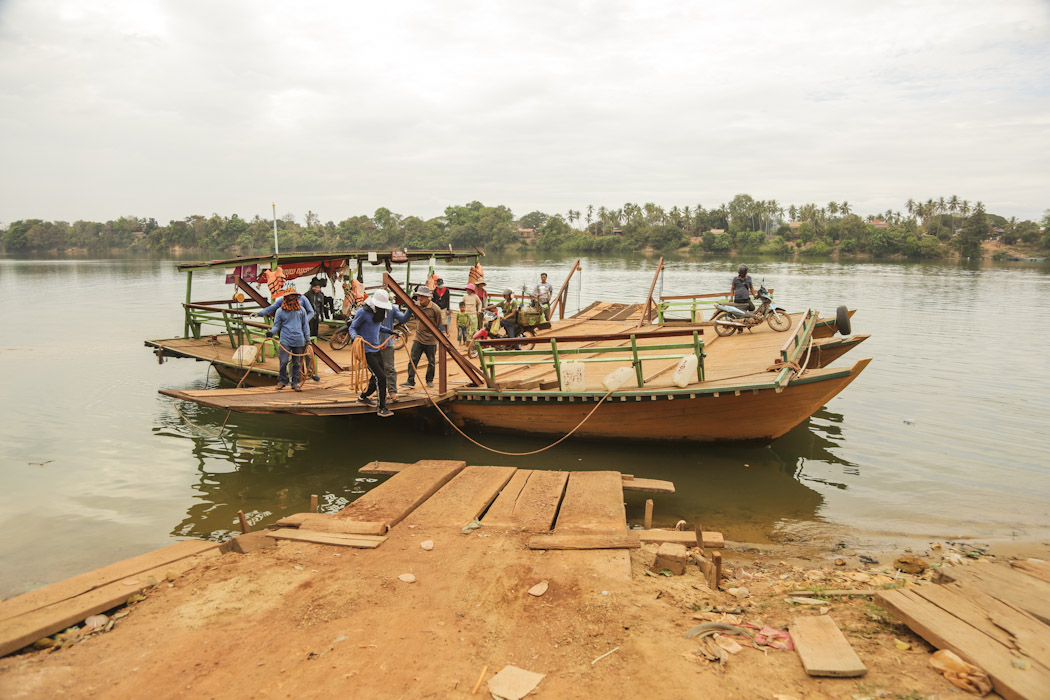
Taking a ferry is an ordeal that takes on a new meaning in Cambodia, simply because ferries here are not quite what one might expect. Jorge had to use a lot of care and expertise to drive across the ‘pier’, which consisted of two wooden slats, nailed together and leaning against a boat that gave access to the ferry. The ferry was another overstatement. Just like the pier, the ferry was made of two small boats with an improvised wooden platform on top that enabled it to transport motorbikes. There was a huge gap between the docking boat and the ferry platform, but Jorge did not lose his nerve (nor did he lose his balance) and soon we were ready to navigate the Mekong.
20. Don’t Get Scared by the Bats at the Bat Cave
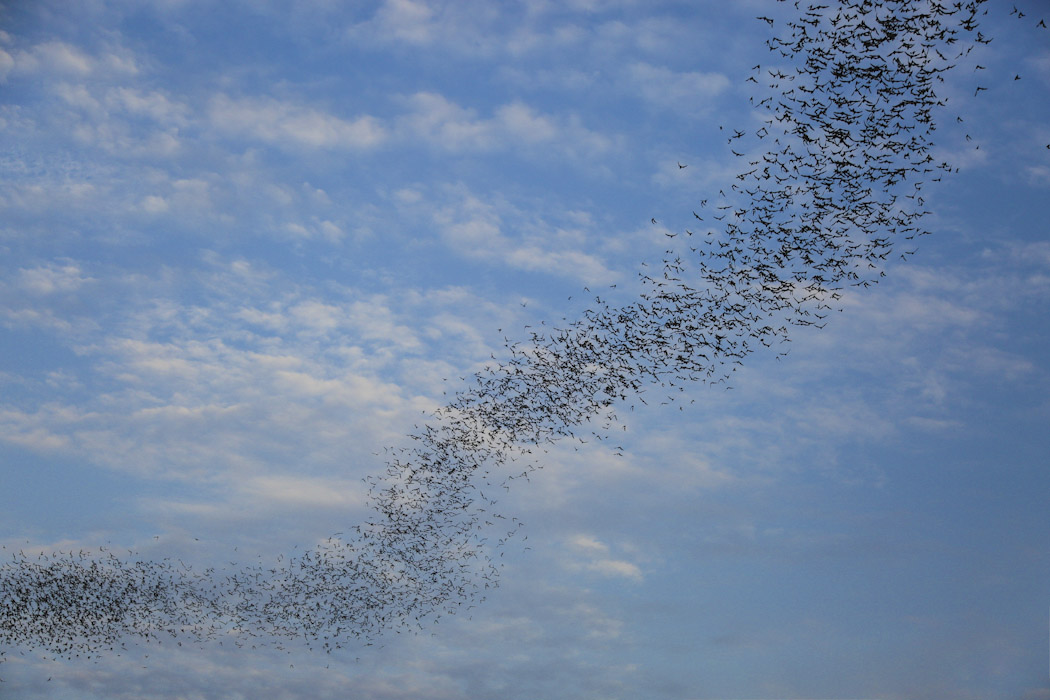
After visiting the Phnom Sampeau site, near Battambang, head to the entrance of the site, near the massive rock, where all the cafés and bars are located. These bars offer first-row seats for the spectacle that happens at around 17h00, daily. A swarm of millions of bats exits the caves located in the rocks of the Phnom Sampeau site. This natural wonder happens daily, when an endless black stream forms all of a sudden. It is a massive number of bats that comes out of the cave, awaken from their day sleep to hunt during the night. It is impressive how the stream keeps coming out of the cave for at least 30 minutes. We heard one of the guides saying that before the colony of bats leaves the cave, one bat comes outside to check the hazards. If he finds none, he goes inside and gives the ok for the entire group to come out.
21. Go Visit the Rice villages
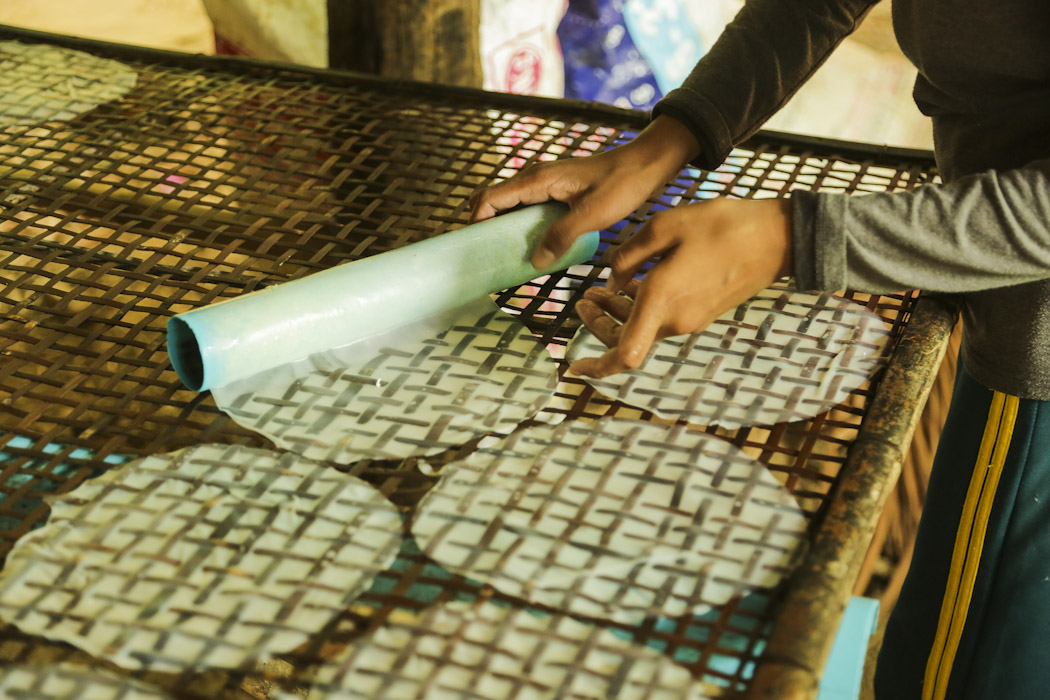
On the way to the Wat Ek Phnom, there are still families that are traditionally producing rice paper. We couldn’t help but ask ourselves why every other house was making rice paper here, in this particular area. The reason is simple, Battambang district is the main rice producer of Cambodia. Rice paper is used to make spring rolls, therefore its demand is quite high. Though there are factories producing it in Cambodia, in Battambang there are still many families making a living off this manual process.
>> Find out more about the rice villages near Battambang
22. Explore the Rural Region of Ratanakiri
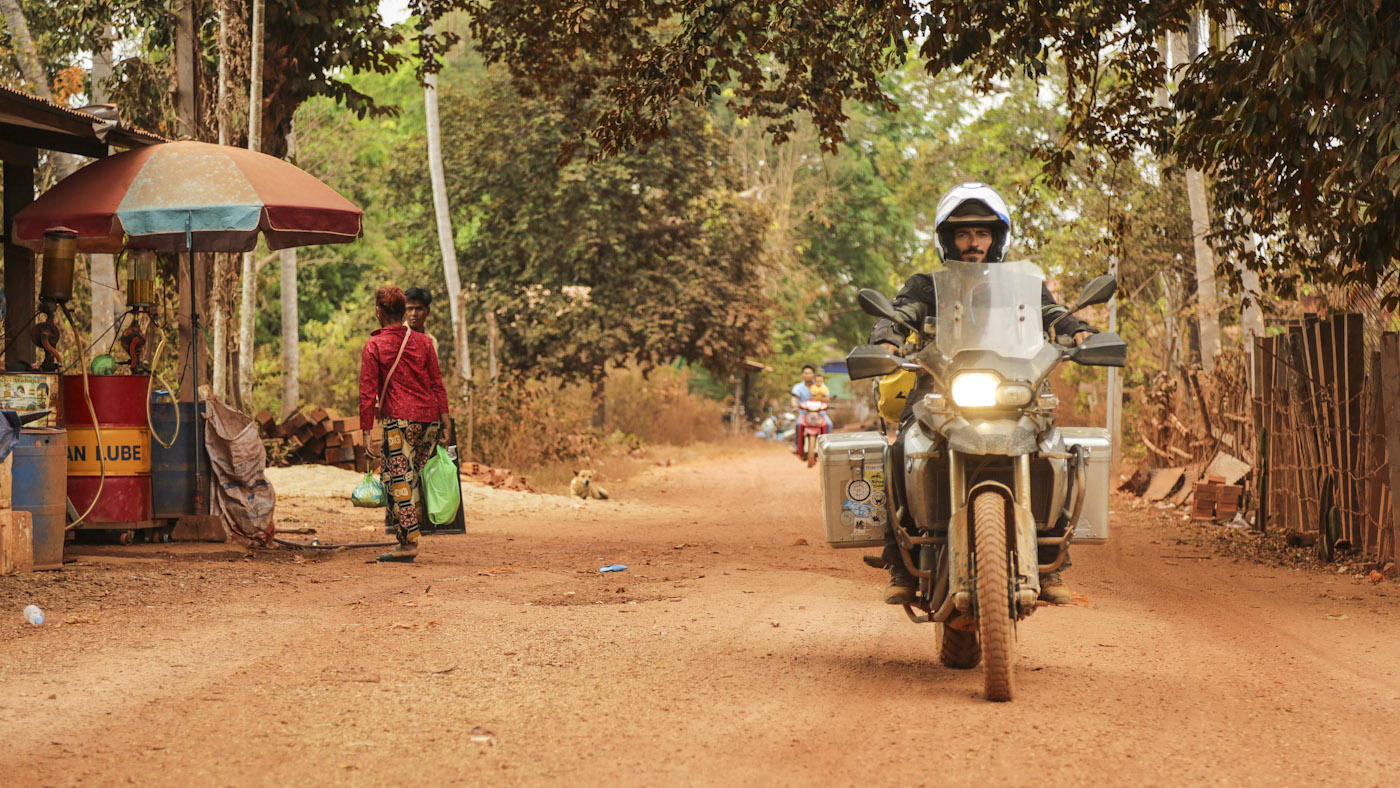
Driving to the Northeastern end of Cambodia usually means you are trying to find the native Cambodian tribes that still live in the very remote hamlets of what is left of the jungle… The area of Ratanakiri is called ‘the red land’ for an obvious reason – if you fail to understand it, wait until you are showering and see all the red dust coming out of your body… After a day of riding through dirt roads, and taking the most improbable ferries, we reached the village of Ban Ke Toch, a small Laotian minority village… Greeted by the primary school teacher, we were allowed to set camp at the school’s playground, and the kids stayed around, curious, until all the gear was up!
23. Have a Ride in the Bamboo Train near Battambang
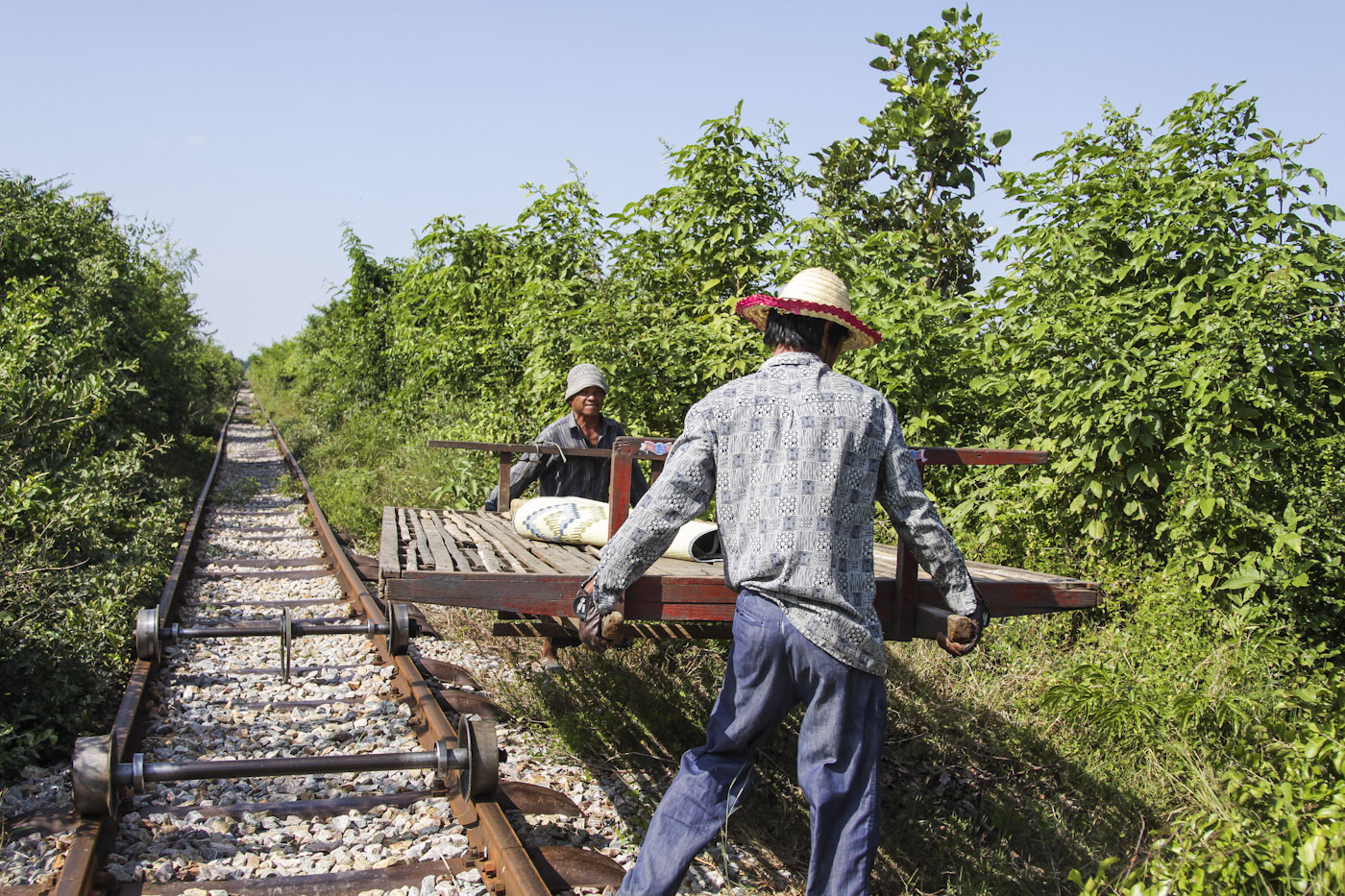
A funny way to go through the countryside’s fields is the bamboo train. This is only a small section of seven kilometres that starts near Wat Banan until a near village. The rest of the railway, originally built by the French colonial government, has been abandoned during the Khmer Rouge period. The population saw the use they could make of the old railway, and improvised bamboo flatbeds on top of railway wheels, leading to this ‘bamboo train’, which they call nori. Mostly moved by man-power, the they soon found out they had a tourist attraction at hands. When two noris meet, the lighter one can be removed to let the other pass and then be put again on the rails.
24. Find Out About the Killing Fields and the Genocide Museum
The Khmer Rouge is the communist regime that ruled Cambodia from 1975 to 1979. They came to power, lead by Pol Pot, when they won the Cambodian Civil war in 1975. Unfortunately to the country and its people, the regime was not only totalitarian but also repressive and paranoid. They imprisoned, tortured and murdered not only their political opponents, but also all the intellectuals to prevent any future rebellion and resistance. Because of their xenophobic ideals to reach national purity, they also massacred different ethnic minorities. This resulted in a genocide that killed 2 million people, i.e. 25% of the Cambodian population. The genocide museum is located in the Tuol Sleng prison, a former secondary school, where at least 20,000 people were imprisoned and tortured. Once this and other prisons ran out of space for mass burials, they started killing and burying their prisoners in the killing fields 15 kilometres away from Phnom Penh. They can also still be visited today.
25. Bathe in The Thosand Linga River at Phnom Kulen
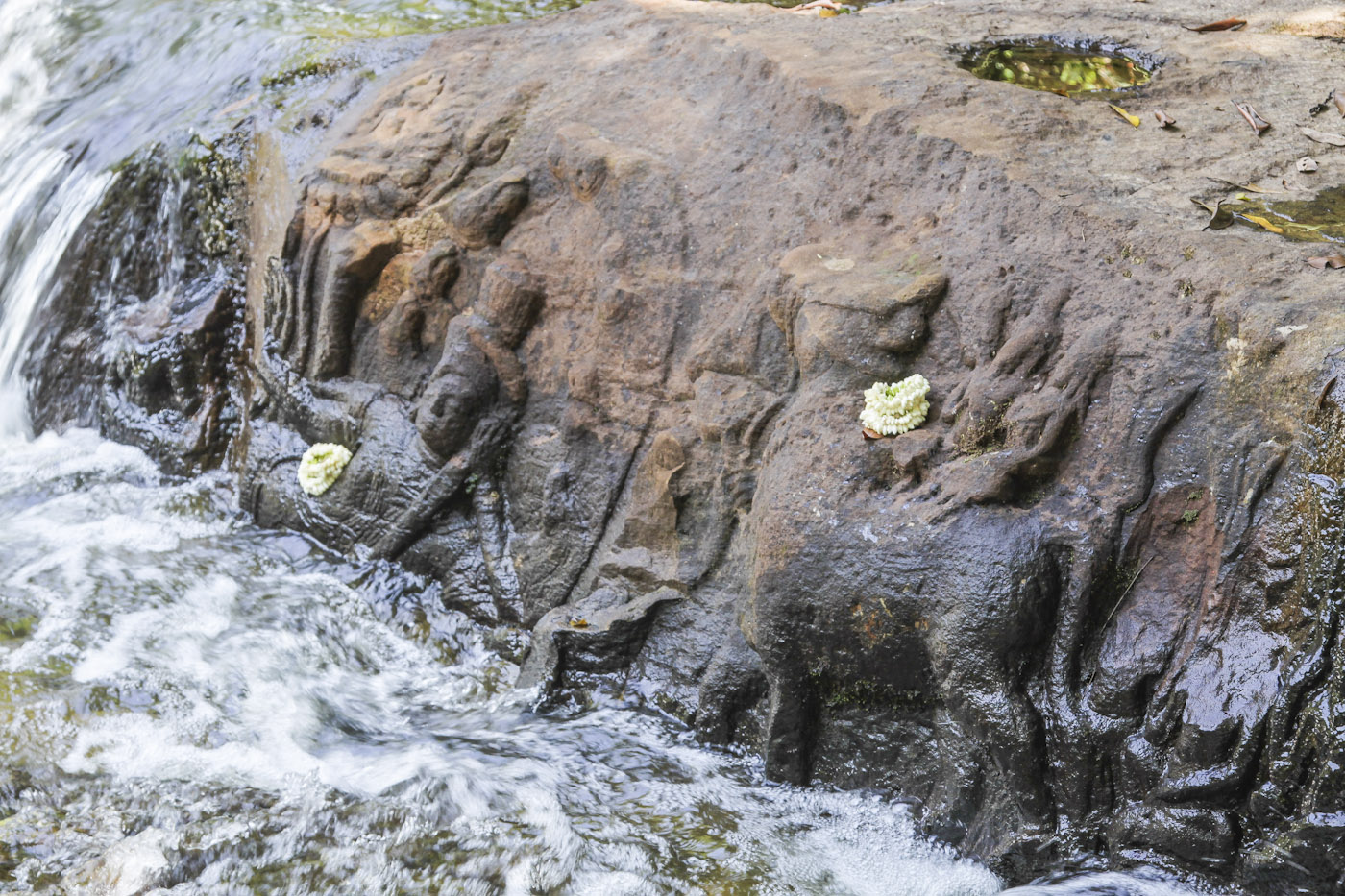
The river of a Thousand Lingas is a riverbank which is adorned with ancient carvings of phalluses and Hindu gods. Many devotees come here with flowers to thank the Gods or to ask for their services.
26. The Siamese Crocodiles
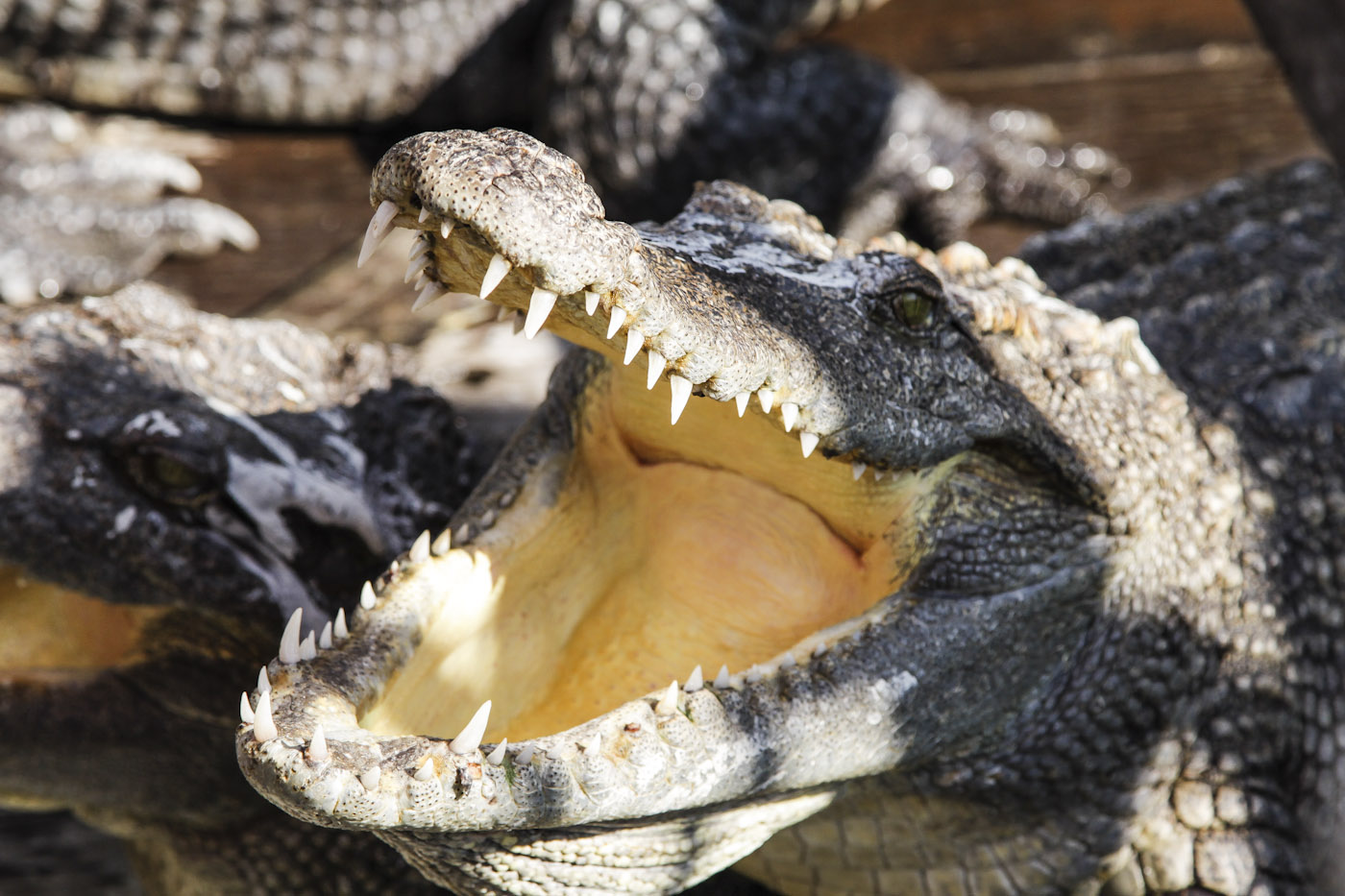
The siamese crocodile is a freshwater crocodile which is native to Southeast Asia. Unfortunately this species is critically endangered. Even though this species is only medium-sized (in comparison with the Australian saltwater crocodile) its size is already very respectful, and we did not feel the need to approach them more than the strictly necessary.
27. Descend to the Sad Killing Caves of Phnom Sampeau
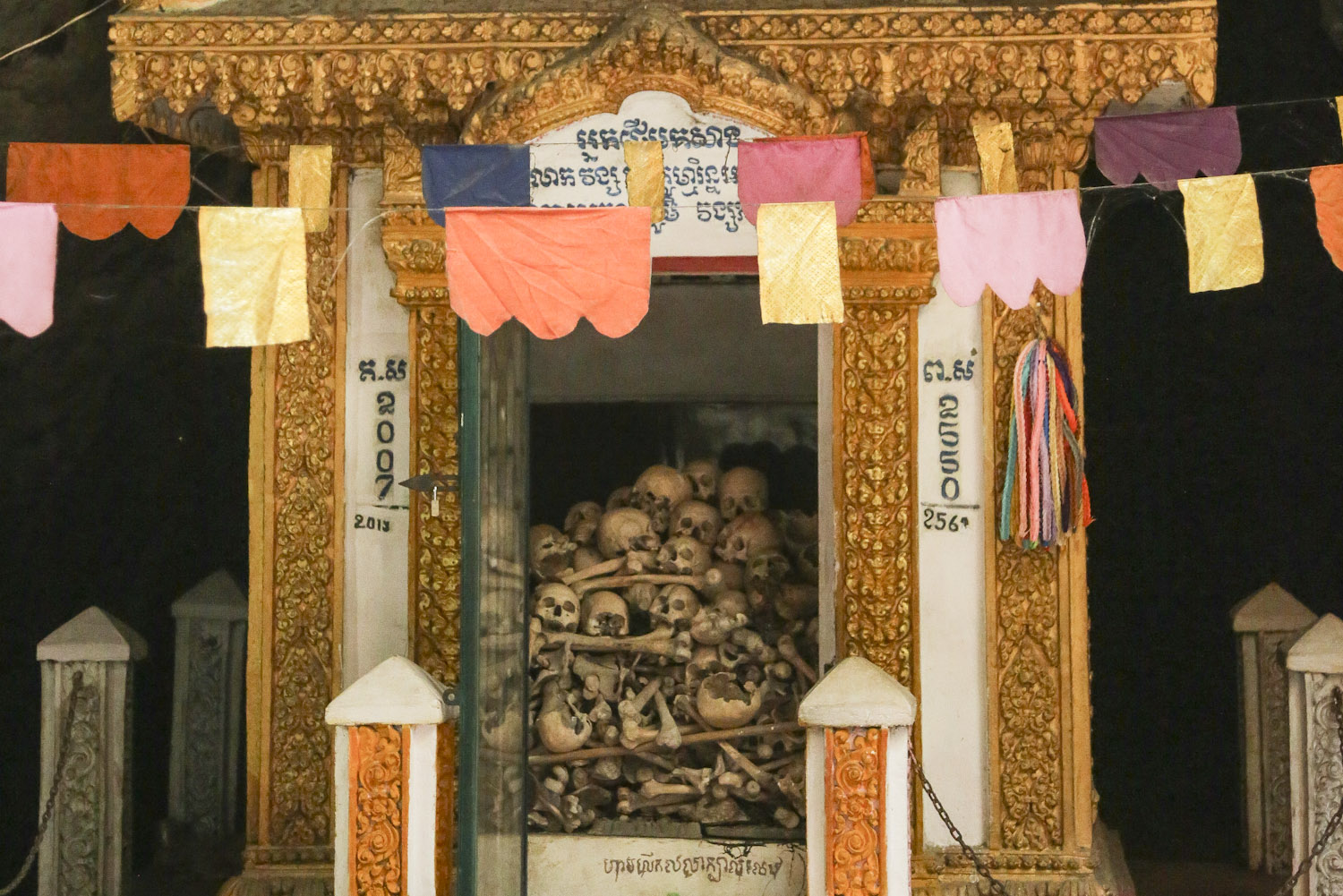
Those that visit the Phnom Sampeau site (with its beautiful temple and bat caves) should also not miss the killing caves of Phnom Sampeau, which were another execution site used by the Khmer Rouge forces. Here, the guards executed their victims at the rim of a daylight shaft, on top of the cave, and then threw the corpses to the interior of the cave. Today the cave serves as a memorial and Buddhist temple.


